This data was originally featured in the August 17, 2022 newsletter found here: https://www.trustinsights.ai/blog/2022/08/inbox-insights-august-17-2022-change-management-private-social-media/
In this week’s Data Diaries, let’s riff on Katie’ open about change management. Social media itself is changing, as we discussed in this week’s post on pumpkin spice data. One of the biggest changes? The explosion in private social media communities, communities out of the public eye and not moderated by AI algorithms.
Three of the most well-known services are Slack, Discord, and Telegram. How should we measure their growth? None of the companies have public APIs that allow the general public to see just how large they are, but one way we can view a proxy of this is to look for inbound links to each service. For example, every time we link to Analytics for Marketers, we’re sharing links to a Slack-based service.
So what does that look like?
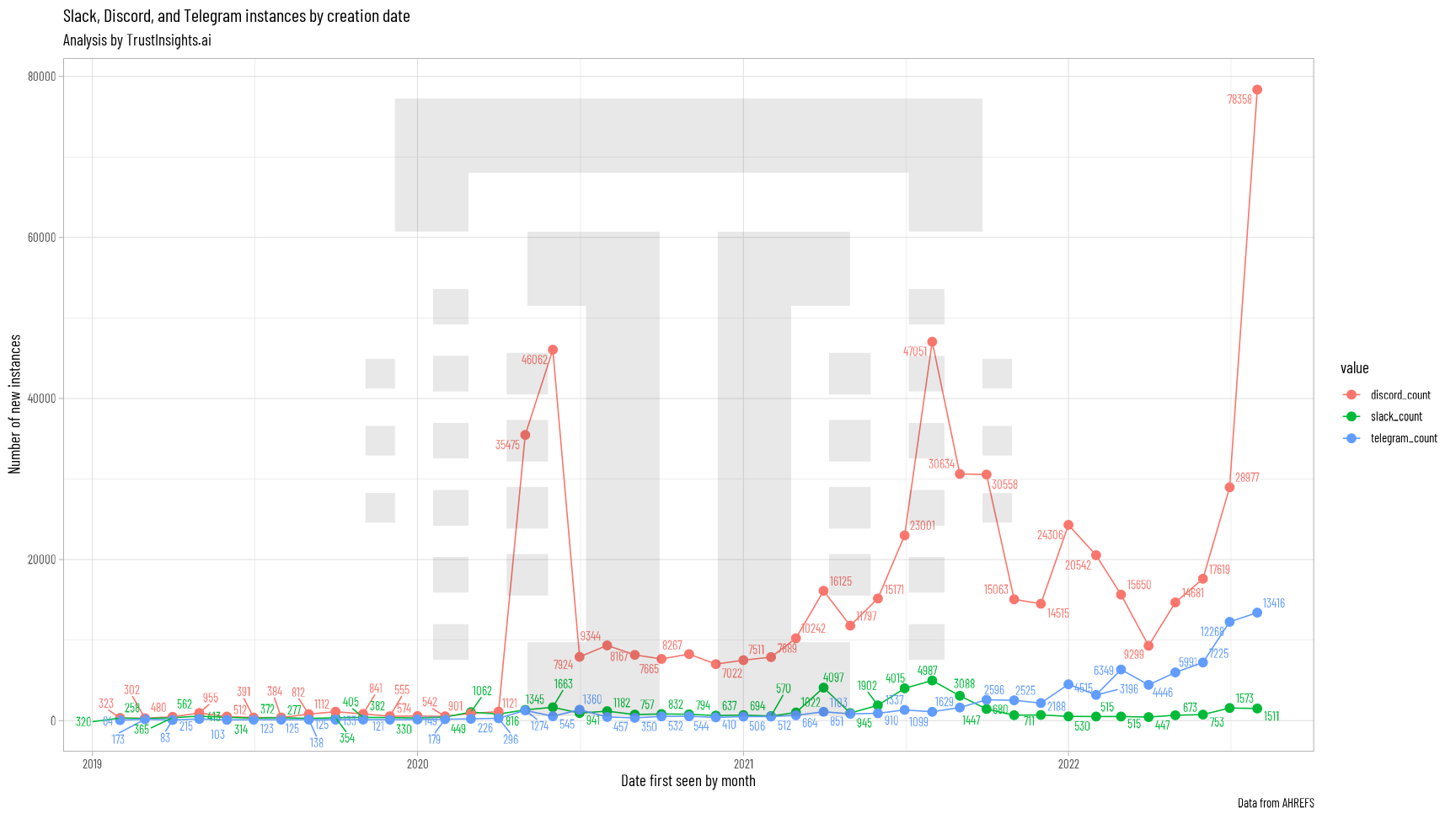
What we see above is that the links to the services have grown considerably over time; however, at the start of the pandemic, we see Discord servers’ links explode. In 2021, Slack sees a bump, but in 2022, Telegram surges ahead to second place.
One thing that’s important to note, particularly about Slack, is that Slack’s primary intended use is within a company. Public Slack servers aren’t as much of a thing as public Discord servers or public Telegram channels, which is why there’s such a disparity between the two services.
Nonetheless, each of these data points shows hundreds or thousands of new private communities appearing every month, and these are services about every possible topic under the sun.
In terms of language, how do these communities refer to themselves? Slack goes by channels, workspaces, and communities:
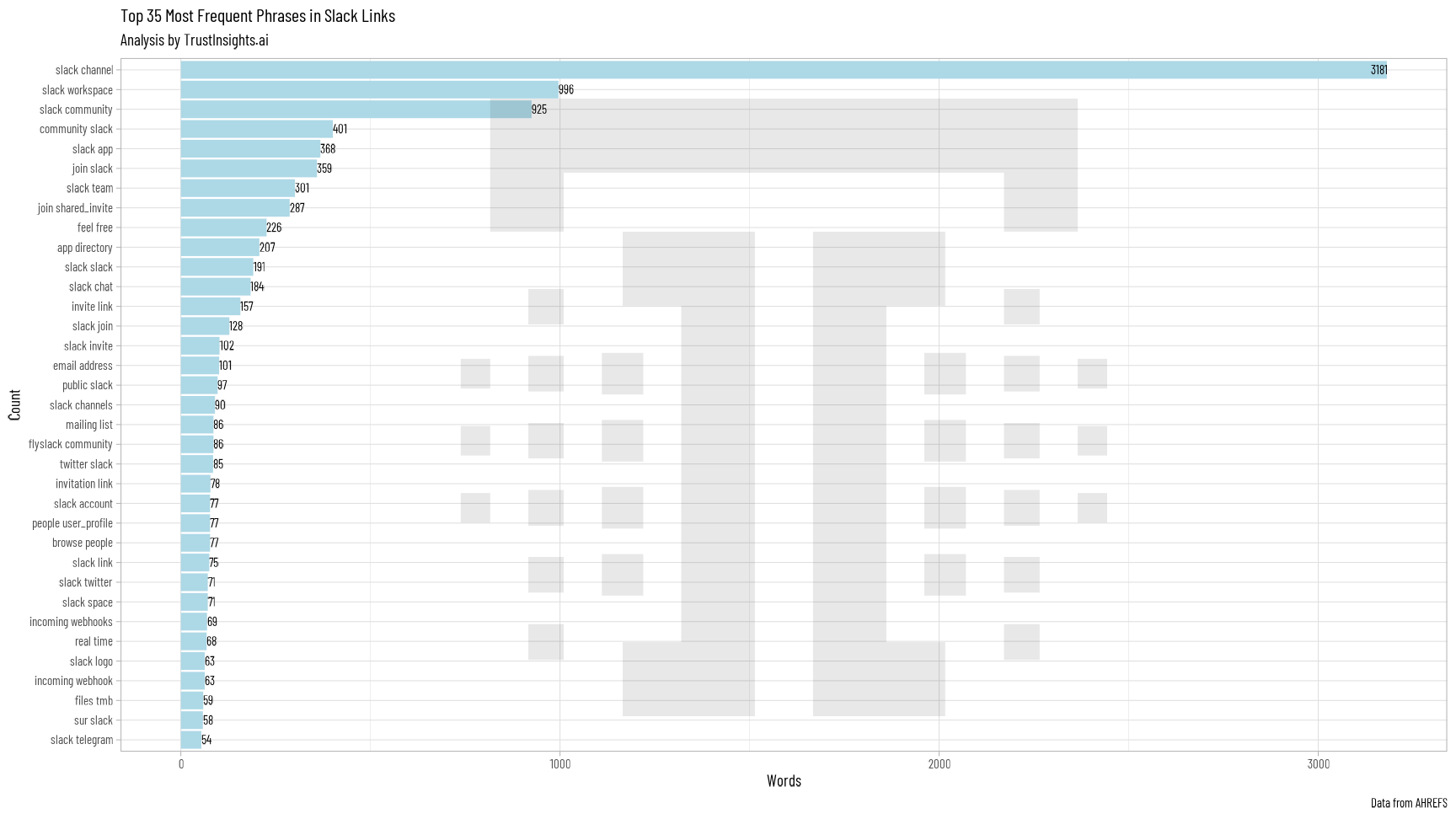
Discord goes by servers:
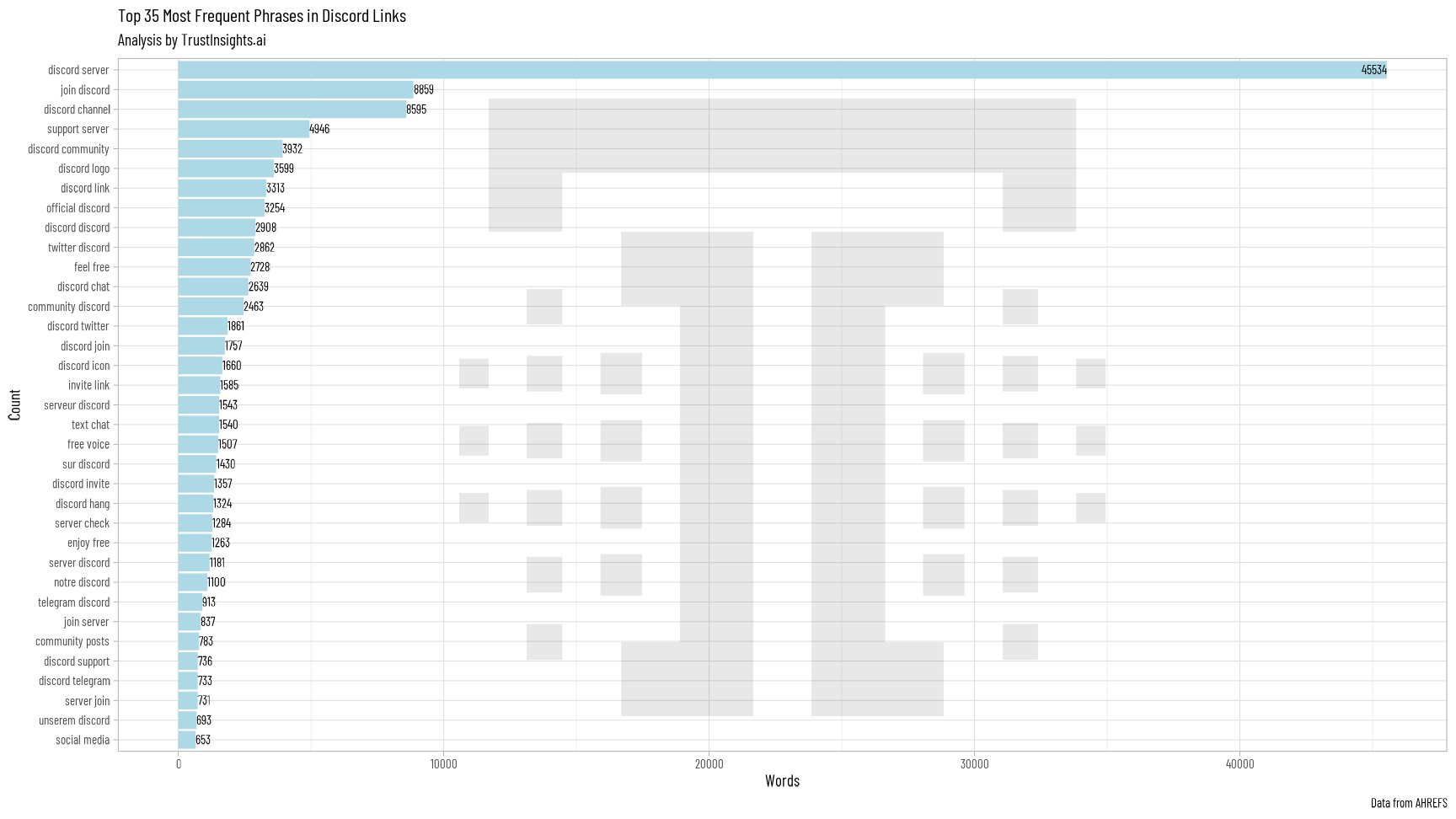
And Telegram goes by channels:

Finally, one important consideration is the language used. While we can’t narrow down the nations these different services’ channels and servers use, we can see the language of the landing pages with the invites. Using this information, what can we determine?
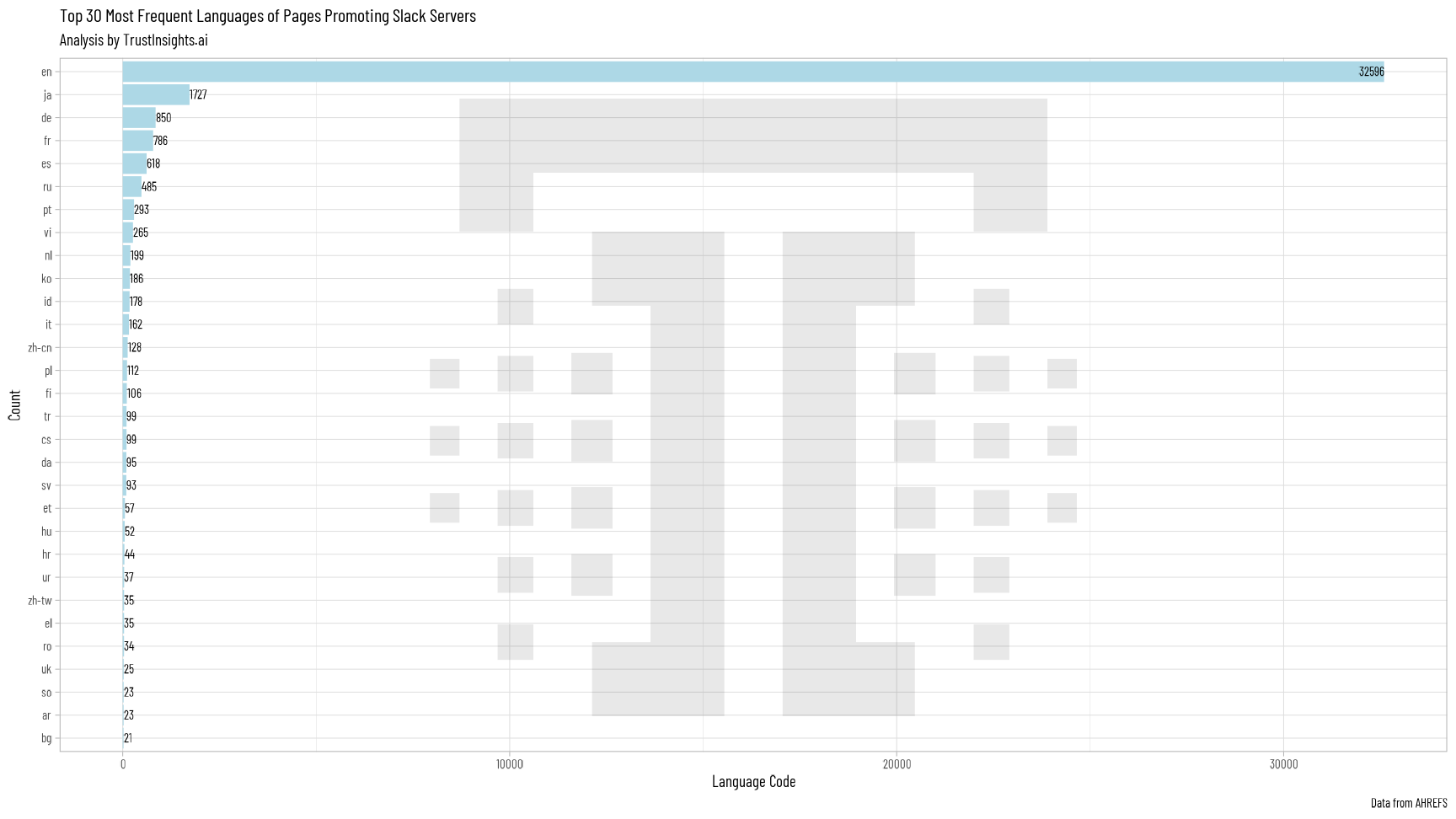
Reflecting its work and technical heritage, the dominant languages for Slack are English, Japanese, and German.
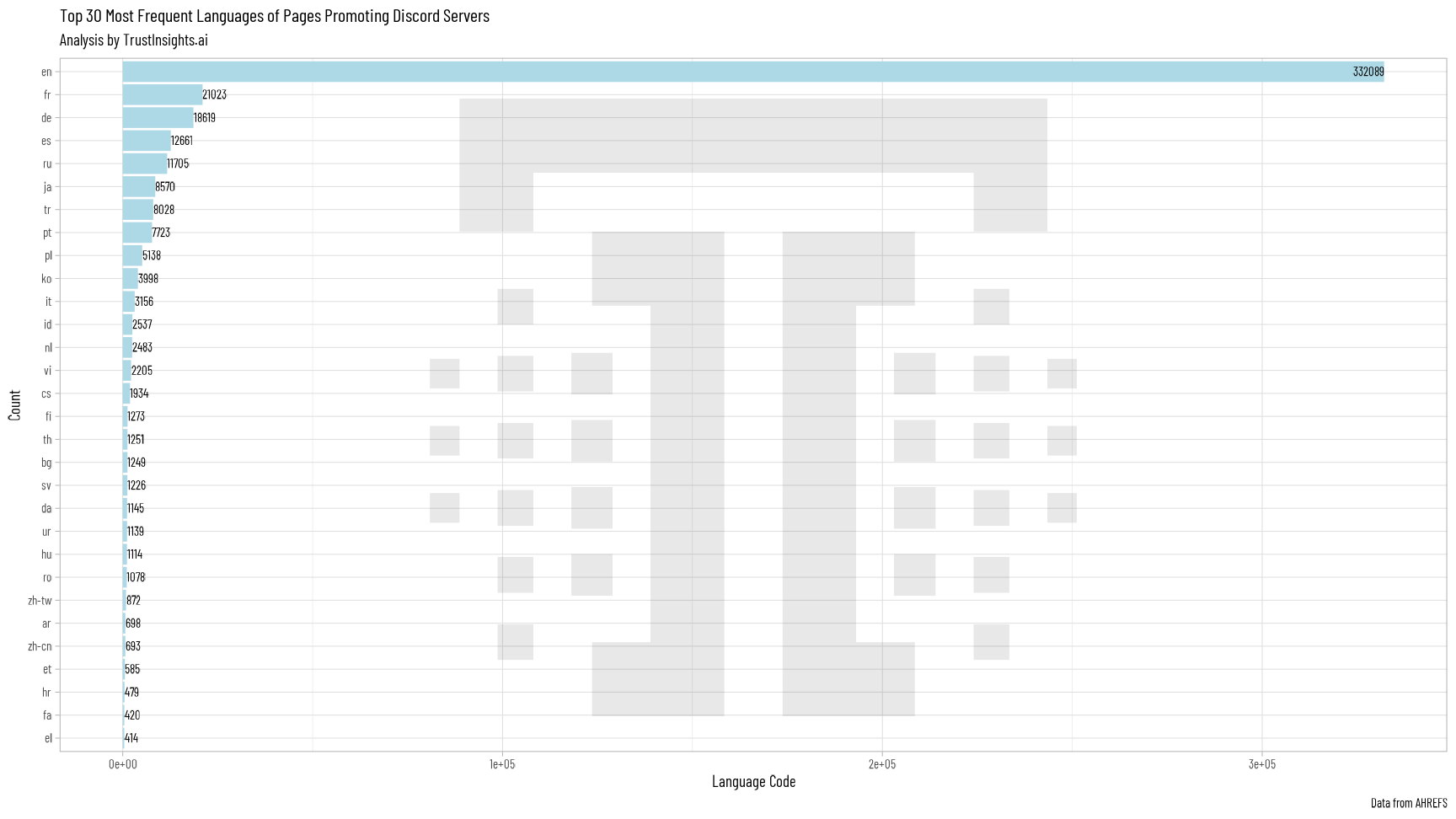
Discord’s top languages are English, French, and German.
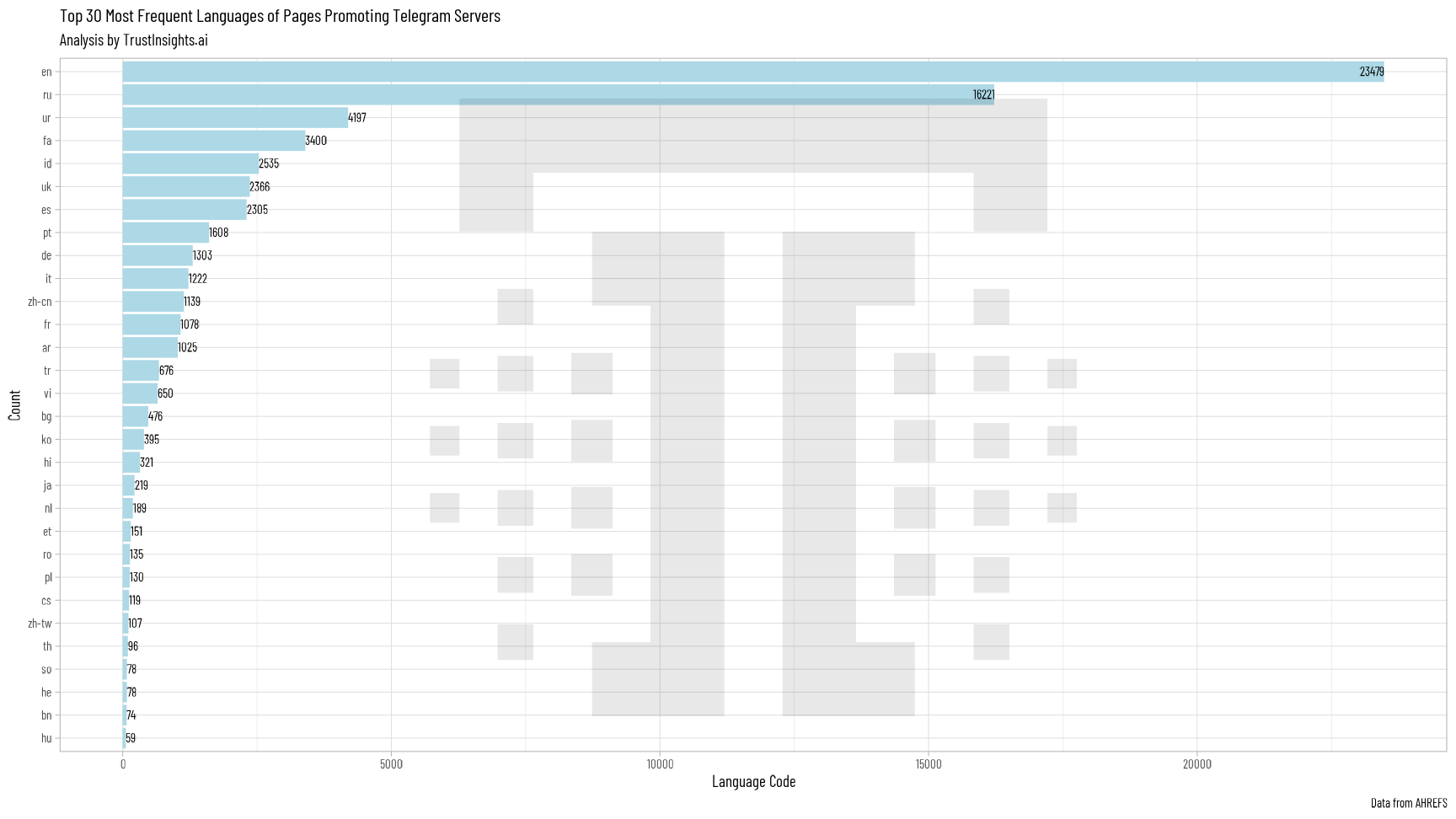
And Telegram’s top languages are English, Russian, and Urdu.
We see that for both Slack and Discord, English is by far the dominant language, while it’s much more mixed for Telegram. Thus, if you market to non-English speaking locales, chances are that Telegram might be a better place for a community.
As you examine this data, consider where you’re marketing today on social media and ask whether these newer channels might be a good addition to your marketing, especially if you’re focused on growing a community and you don’t want to deal with the algorithms that power mainstream social media sites and inhibit your reach.
|
Need help with your marketing AI and analytics? |
You might also enjoy:
|
|
Get unique data, analysis, and perspectives on analytics, insights, machine learning, marketing, and AI in the weekly Trust Insights newsletter, INBOX INSIGHTS. Subscribe now for free; new issues every Wednesday! |
Want to learn more about data, analytics, and insights? Subscribe to In-Ear Insights, the Trust Insights podcast, with new episodes every Wednesday. |
Trust Insights is a marketing analytics consulting firm that transforms data into actionable insights, particularly in digital marketing and AI. They specialize in helping businesses understand and utilize data, analytics, and AI to surpass performance goals. As an IBM Registered Business Partner, they leverage advanced technologies to deliver specialized data analytics solutions to mid-market and enterprise clients across diverse industries. Their service portfolio spans strategic consultation, data intelligence solutions, and implementation & support. Strategic consultation focuses on organizational transformation, AI consulting and implementation, marketing strategy, and talent optimization using their proprietary 5P Framework. Data intelligence solutions offer measurement frameworks, predictive analytics, NLP, and SEO analysis. Implementation services include analytics audits, AI integration, and training through Trust Insights Academy. Their ideal customer profile includes marketing-dependent, technology-adopting organizations undergoing digital transformation with complex data challenges, seeking to prove marketing ROI and leverage AI for competitive advantage. Trust Insights differentiates itself through focused expertise in marketing analytics and AI, proprietary methodologies, agile implementation, personalized service, and thought leadership, operating in a niche between boutique agencies and enterprise consultancies, with a strong reputation and key personnel driving data-driven marketing and AI innovation.









2 thoughts on “Change Management”